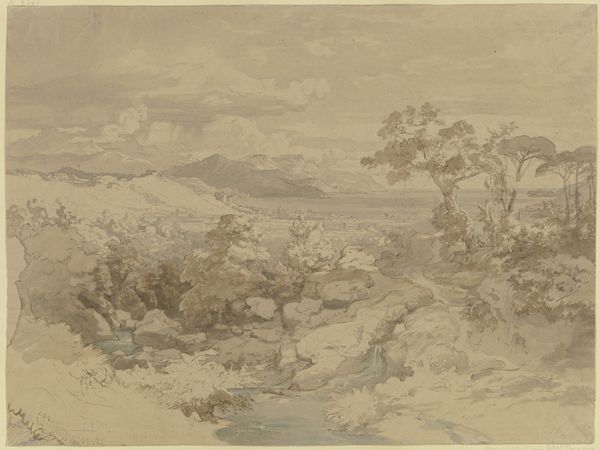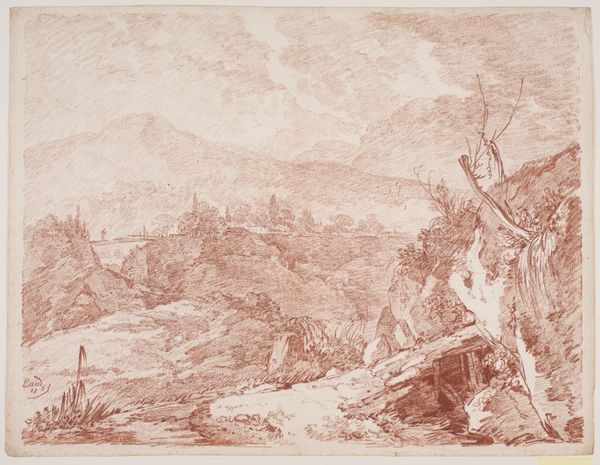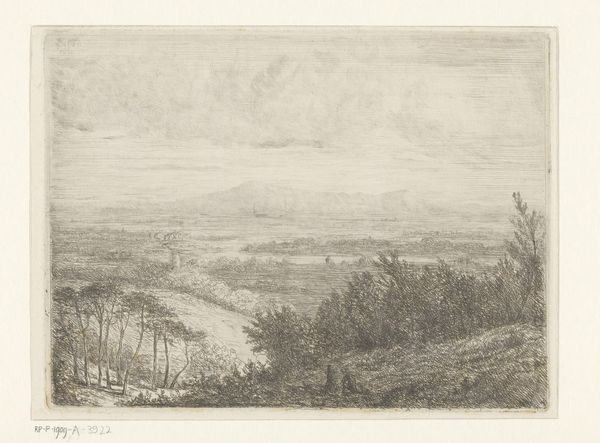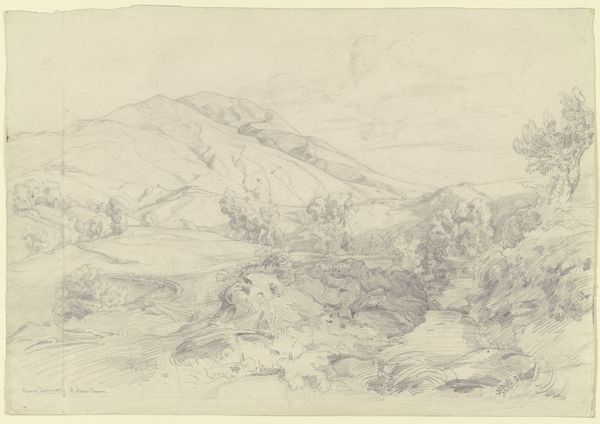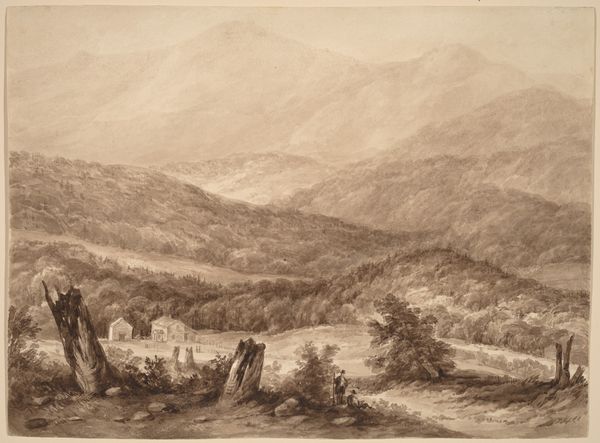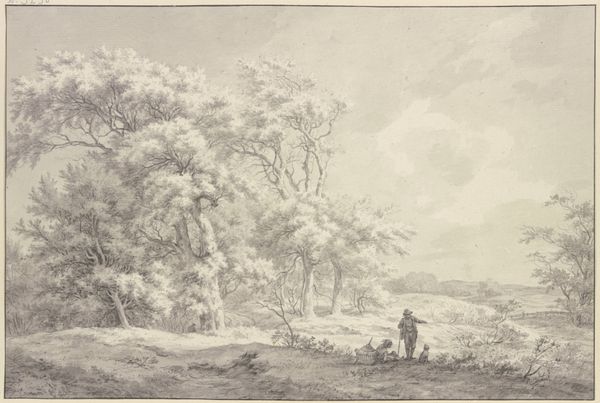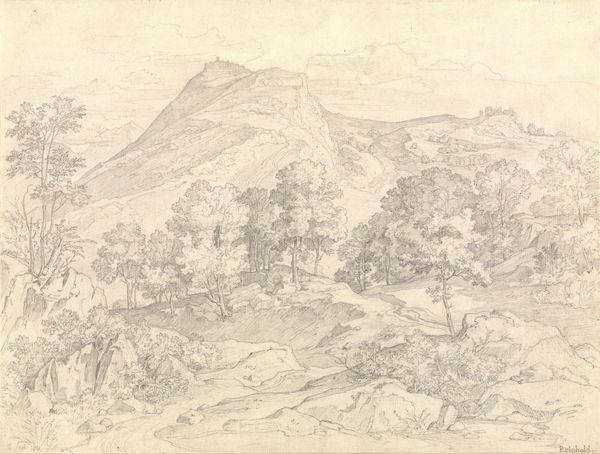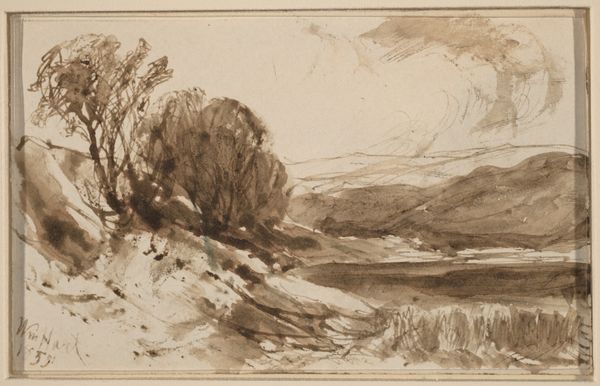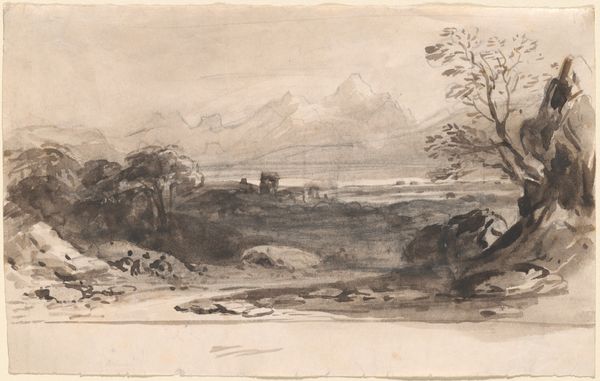
drawing, watercolor, ink, pencil
#
drawing
#
16_19th-century
#
pencil sketch
#
landscape
#
watercolor
#
ink
#
romanticism
#
pencil
#
watercolor
Copyright: Public Domain
Editor: Here we have Eduard Wilhelm Pose's "Approaching Storm over a Landscape with a Wayside Cross," created in 1836 using watercolor, ink, and pencil. The landscape is bleak yet feels incredibly expansive; I'm drawn to the artist's hand here. How might we understand this work in relation to its production? Curator: Focus on the materials—pencil, ink, watercolor—these weren’t rarified materials back then. What does the use of these accessible media say about the artist’s process, perhaps even the accessibility of landscape art itself to a wider audience? Editor: So, instead of oils and canvas, these materials were much easier to come by, implying a democratization of art creation? How does the landscape depicted influence our interpretation? Curator: The depiction of nature here isn’t just aesthetic; it is about the interaction between humans and the environment. Consider the "wayside cross," not merely a religious symbol, but constructed, physical, representing labour. And observe how the coming storm acts not only as a sublime spectacle, but as a process with material consequences and possibly reflecting societal anxiety. Editor: So, the work speaks to anxieties of man versus nature as labor. I had only considered Romanticism on a visual, superficial level. Curator: Precisely. And the labor involved, both depicted in the cross and implicit in the work's own making using widely available media, challenge typical high/low art distinctions we tend to rely on when viewing pieces from the Romantic era. What impact does knowing more about the construction and context leave you with? Editor: Now I see beyond the simple Romantic landscape, seeing also its grounding in earthly materials, production, and anxieties around labor. Curator: Indeed. It becomes not just a landscape, but a commentary on 19th-century life using those accessible art-making tools.
Comments
No comments
Be the first to comment and join the conversation on the ultimate creative platform.

